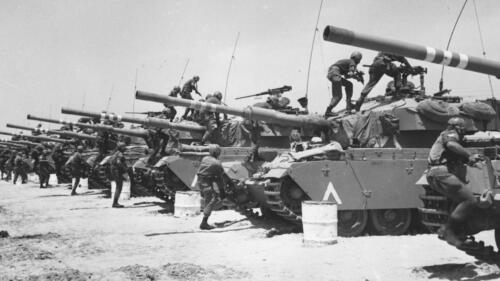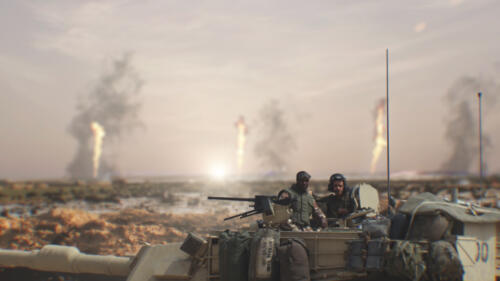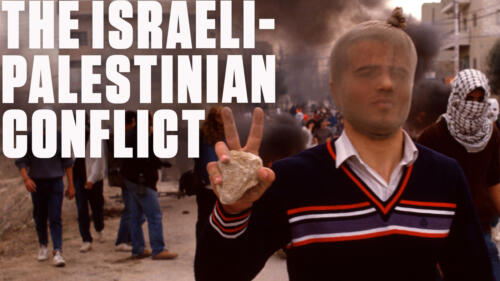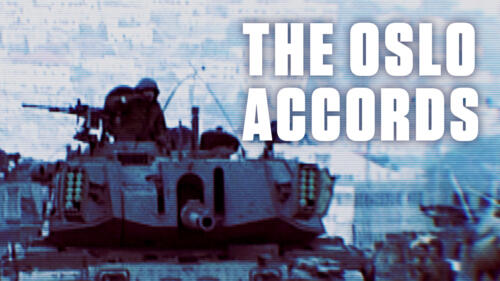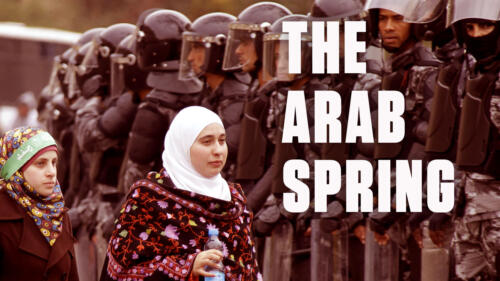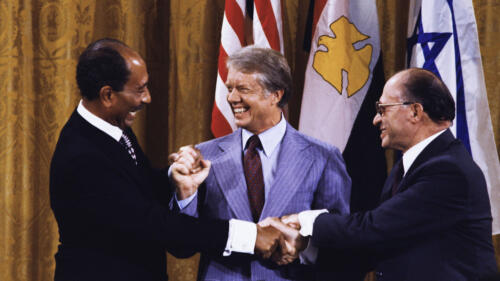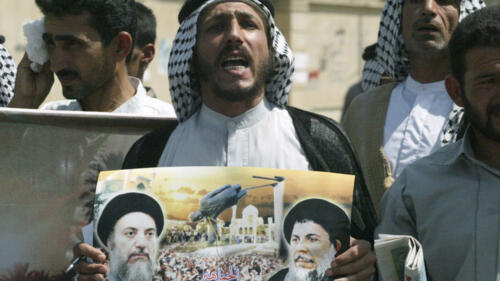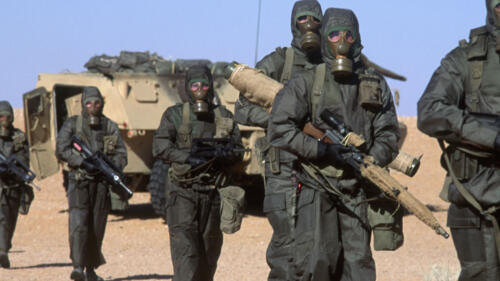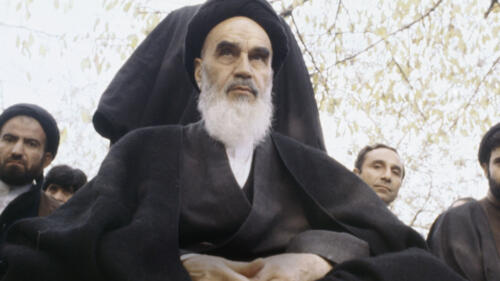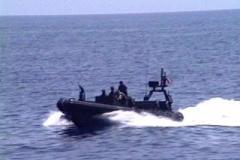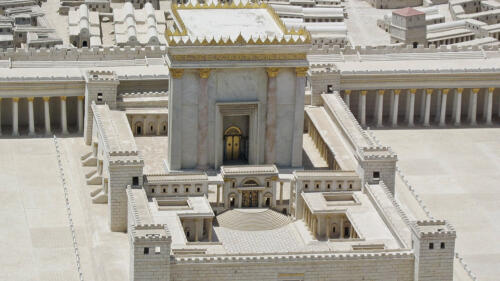Middle Eastern History
The Middle East is a large and diverse region composed of several countries and cultures in north Africa and western Asia. Its complex recent history includes the Persian Gulf War, the Iran Hostage Crisis, the Yom Kippur War and more.

Start Here

The 1978 Camp David Accords secured a lasting peace between two longtime enemies in the Middle East.

The Ottoman Empire was once among the biggest military and economic powers in the world. So what happened?

Where they built, fought and prayed.

On November 4, 1979, a group of Iranian students stormed the U.S. Embassy in Tehran, taking more than 60 American hostages. Their reaction was based on President Jimmy Carter’s decision to allow Iran’s deposed Shah, a pro-Western autocrat, to come to the U.S. for cancer treatment and to declare a break with Iran’s past and an end to American interference in its affairs.
Arab Spring
Here's How The Arab Spring Started and How It Affected the World
Learn how The Arab Spring started in Tunisia in 2011, causing a ripple effect of democratic demonstrations in countries throughout the Middle East and North Africa. Discover how the use of technology helped spur on revolution, both good and bad.
3 Revolutions of the Arab Spring
Explore All Related Topics

Neither Einstein nor Israel thought it was a good idea.

Anger at the Shah—and at foreign influence—spurred a popular uprising with lasting worldwide repercussions.

Tanks—particularly the M1A1 Abrams—proved critical for U.S.-led coalition forces in the Persian Gulf War.

The Ottoman Empire was once among the biggest military and economic powers in the world. So what happened?

The 1978 Camp David Accords secured a lasting peace between two longtime enemies in the Middle East.

The key to the Iraq War’s biggest triumph wasn’t firepower or technology or 'enhanced' interrogation. It was more personal than that.

What started as a nonviolent uprising in 2011 escalated into a full-fledged civil war.

The Six-Day War was a brief but bloody conflict fought in June 1967 between Israel and the Arab states of Egypt, Syria and Jordan. The brief war ended with a U.N.-brokered ceasefire, but it significantly altered the map of the Mideast and gave rise to lingering geopolitical friction.

A look back at America's long-simmering conflict with Iran.

Origins of the PLO The PLO emerged in response to various compounding events that took place in the Middle East. In 1948, Israel became an independent state, which resulted in more than 750,000 Palestinians fleeing their homeland. The subsequent 1948 wa...

After air strikes and chemical attacks in Syria, this unarmed, neutral group of 3,000-plus civilians digs for survivors, evacuates the injured and buries the dead.

Peace in the Middle East The ultimate goal of the Camp David Accords was to establish a framework for peace in the Middle East by formalizing Arab recognition of Israel’s right to exist, developing a procedure for the withdrawal of Israeli forces and ci...

The Beginnings of the Oslo Accords The negotiations between Israel and the PLO that ultimately led to the Oslo Accords began, in secret, in Oslo, Norway, in 1993. Neither side wanted to publicly acknowledge their presence at the talks for fear of genera...

What Is the Arab Spring? The Arab Spring was a loosely related group of protests that ultimately resulted in regime changes in countries such as Tunisia, Egypt and Libya. Not all of the movements, however, could be deemed successful—at least if the end ...

Zionism Britain’s acknowledgement and support of Zionism, and Zionism’s focus on establishing a Jewish homeland in Palestine, emerged from growing concerns about the direction of World War I. By mid-1917, Britain and France were mired in a virtual stale...

Constantinople is an ancient city in modern-day Turkey that’s now known as Istanbul. First settled in the seventh century B.C., Constantinople developed into a thriving port thanks to its prime geographic location between Europe and Asia and its natural harbor. In A.D. 330, it became the site of Roman Emperor Constantine’s “New Rome,” a Christian city of immense wealth and magnificent architecture.

The Ottoman Empire, an Islamic superpower, ruled much of the Middle East, North Africa and Eastern Europe between the 14th and early 20th centuries.

Palestine is a small region of land in the eastern Mediterranean region that includes parts of modern Israel and the Palestinian territories of the Gaza Strip and the West Bank. It has played a prominent role in the ancient and modern history of the Middle East and has been marked by frequent political conflict and violent land seizures.

Zionism is a religious and political movement that brought Jews to their ancient homeland and reestablished Israel as the central location for Jewish identity.

Ancient Syria Modern-day Syria, a country located in the Middle East on the shore of the Mediterranean Sea, is one of the most ancient inhabited regions on Earth. The oldest human remains found in Syria date back to roughly 700,000 years ago. Archeologi...

Israel is small country in the Middle East, located on the eastern shores of the Mediterranean Sea and bordered by Egypt, Jordan, Lebanon and Syria. The nation of Israel—with a population of more than 9 million people, most of them Jewish—has many important archaeological and religious sites considered sacred by Jews, Muslims and Christians alike, and a complex history with periods of peace and conflict.

Check out 10 surprising facts about the man known as “Lawrence of Arabia.”

On November 4, 1979, a group of Iranian students stormed the U.S. Embassy in Tehran, taking more than 60 American hostages. Their reaction was based on President Jimmy Carter’s decision to allow Iran’s deposed Shah, a pro-Western autocrat, to come to the U.S. for cancer treatment and to declare a break with Iran’s past and an end to American interference in its affairs.

Atatürk: The Early Years Mustafa, who became Mustafa Kemal as a teenager and then Mustafa Kemal Atatürk late in life, was born around 1881 in the city of Salonica (now Thessaloniki, Greece), which at that time was part of the Ottoman Empire. His family ...

The Yom Kippur War of October 1973 saw Egyptian and Syrian forces attack Israel on the holiest day of the Jewish calendar, before a cease-fire was secured.

The Persian Gulf War, or Operation Desert Storm, began in 1991 after President Saddam Hussein of Iraq ordered the invasion and occupation of neighboring Kuwait.

In September 1980, Iraqi forces launched a full-scale invasion of neighboring Iran, beginning the Iran-Iraq War. Fueled by territorial, religious and political disputes between the two nations, the conflict ended in an effective stalemate and a cease-fire nearly eight years later.
